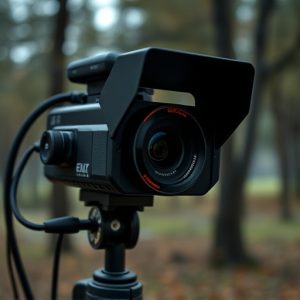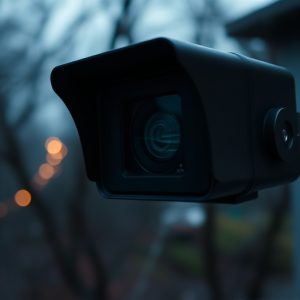Tiny Cameras for Home Monitoring: Installation Best Practices & Ethical Guidelines
Tiny cameras for home monitoring offer powerful yet discreet surveillance, enhancing security with H…….
Tiny cameras for home monitoring offer powerful yet discreet surveillance, enhancing security with HD video, motion detection, and smartphone access at an affordable cost. For complete coverage, adopt a strategic multi-layered approach, mapping needs and using vertical spaces for indoor/outdoor camera placement. Ethical considerations include privacy respect, transparency, and legal compliance with data protection laws. Regular maintenance ensures optimal performance through checks, updates, and routine inspections.
“Uncover the power of tiny cameras for enhancing home security with our comprehensive guide. We explore best practices for installing a covert camera network, ensuring optimal protection without compromising privacy. From understanding the technology’s capabilities to planning an efficient layout, this article covers it all. Learn about ethical considerations and legal aspects to ensure your setup stays within boundaries. Additionally, discover troubleshooting tips for maintenance, making your home monitoring system a reliable ally.”
- Understanding Tiny Cameras for Home Monitoring: A Brief Overview
- Planning the Camera Network Layout: Strategies and Tips
- Ethical Considerations and Legal Aspects of Installation
- Post-Installation: Troubleshooting and Maintenance Guidelines
Understanding Tiny Cameras for Home Monitoring: A Brief Overview
Tiny cameras for home monitoring have revolutionized home security, offering a discreet and comprehensive surveillance solution. These miniature devices pack advanced technology into compact packages, making them virtually invisible yet highly effective. Their versatility allows for strategic placement inside or outside your property, providing 24/7 peace of mind.
Whether you’re looking to deter potential intruders or simply want to keep an eye on your valuable possessions, tiny cameras for home monitoring provide a cost-effective and efficient way to enhance your security system. With high-definition video quality, motion detection capabilities, and remote access via smartphone apps, these cameras offer unparalleled convenience and control.
Planning the Camera Network Layout: Strategies and Tips
When planning a covert camera network for home monitoring using tiny cameras, consider a multi-layered approach to achieve comprehensive coverage without raising suspicion. Map out the areas that require surveillance and determine the optimal placement of cameras based on line-of-sight and blind spot analysis. Utilize vertical spaces like ceilings and walls to install cameras discreetly, ensuring they are not easily noticeable.
Incorporate a mix of indoor and outdoor cameras to capture all entry points and common areas. Ensure each camera has a clear view and is positioned at the right angle for optimal video quality. Regularly test the network’s connectivity and ensure signal strength in every corner of the monitored area. By strategically planning the camera network layout, you can create an effective security system that remains invisible to potential intruders while providing peace of mind for homeowners.
Ethical Considerations and Legal Aspects of Installation
The ethical considerations surrounding the installation of a covert camera network are paramount, especially with the use of tiny cameras for home monitoring. It’s crucial to respect privacy rights and ensure informed consent from individuals who may be captured on film. Transparency is key; residents should be made aware of the presence of these devices, their purpose, and where footage is stored or transmitted. This becomes increasingly important in a domestic setting, as family members or guests might not anticipate being recorded.
Legally, there are stringent rules governing the installation and use of surveillance equipment, particularly in homes. In many jurisdictions, covert cameras must adhere to strict guidelines regarding their placement, purpose, and accessibility. Installation should comply with data protection laws, ensuring secure handling and storage of any captured images or videos. Homeowners considering such a system must familiarize themselves with local regulations to avoid legal repercussions while maintaining effective home monitoring using tiny cameras.
Post-Installation: Troubleshooting and Maintenance Guidelines
After a successful covert camera network installation, proper troubleshooting and maintenance are crucial to ensure optimal performance of tiny cameras for home monitoring. Regularly check each camera’s connection, including power cables and data links, to identify any loose connections or damage. Utilize diagnostic tools provided by the manufacturer to verify signal strength and video quality. Addressing issues promptly ensures uninterrupted surveillance.
Maintenance involves updating firmware, replacing worn-out components like batteries or memory cards, and cleaning lenses for optimal visual clarity. Keep detailed records of maintenance activities and equipment specifications for future reference. Schedule routine inspections to identify any potential security vulnerabilities or camera malfunctions before they compromise the network’s integrity.
When properly implemented, a covert camera network can significantly enhance home security. By understanding the capabilities of tiny cameras, strategically planning layout, adhering to ethical and legal guidelines, and maintaining the system post-installation, you can create an effective monitoring solution. Remember that the key lies in balancing privacy with security—a responsible approach that leverages technology for peace of mind.


